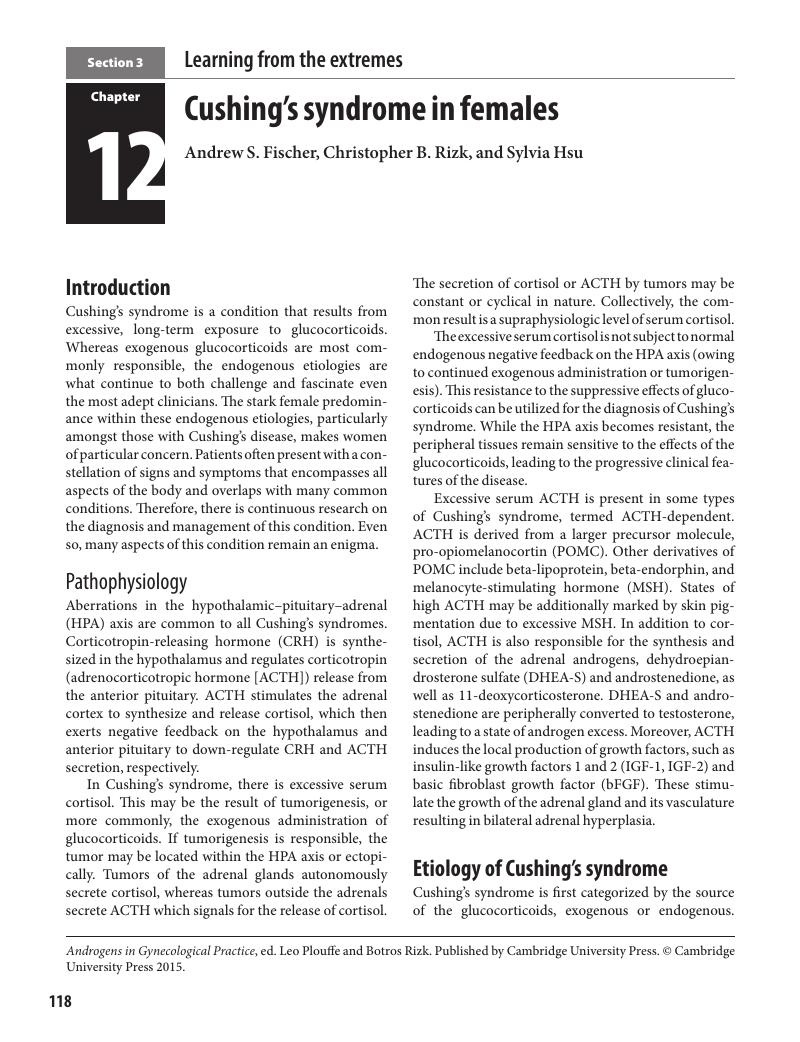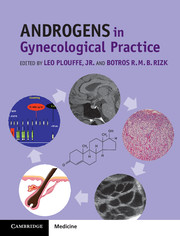Book contents
- Androgens in Gynecological Practice
- Androgens in Gynecological Practice
- Copyright page
- Contents
- About the editors
- Dedication
- Contributors
- Preface
- Section 1 Managing the basics
- Section 2 The scientific essentials
- Section 3 Learning from the extremes
- 11 Congenital adrenal hyperplasia in females
- 12 Cushing’s syndrome in females
- 13 Androgen-producing ovarian tumors
- 14 Cognitive and behavioral impact of androgen disorders in females: Learning from complete androgen insensitivity syndrome and congenital adrenal hyperplasia
- 15 Testosterone replacement in the aging male: Lessons learned from the Women’s Health Initiative
- Section 4 The tool kit
- Index
- Plate Section
- References
12 - Cushing’s syndrome in females
from Section 3 - Learning from the extremes
Published online by Cambridge University Press: 05 July 2015
- Androgens in Gynecological Practice
- Androgens in Gynecological Practice
- Copyright page
- Contents
- About the editors
- Dedication
- Contributors
- Preface
- Section 1 Managing the basics
- Section 2 The scientific essentials
- Section 3 Learning from the extremes
- 11 Congenital adrenal hyperplasia in females
- 12 Cushing’s syndrome in females
- 13 Androgen-producing ovarian tumors
- 14 Cognitive and behavioral impact of androgen disorders in females: Learning from complete androgen insensitivity syndrome and congenital adrenal hyperplasia
- 15 Testosterone replacement in the aging male: Lessons learned from the Women’s Health Initiative
- Section 4 The tool kit
- Index
- Plate Section
- References
Summary

- Type
- Chapter
- Information
- Androgens in Gynecological Practice , pp. 118 - 135Publisher: Cambridge University PressPrint publication year: 2015



